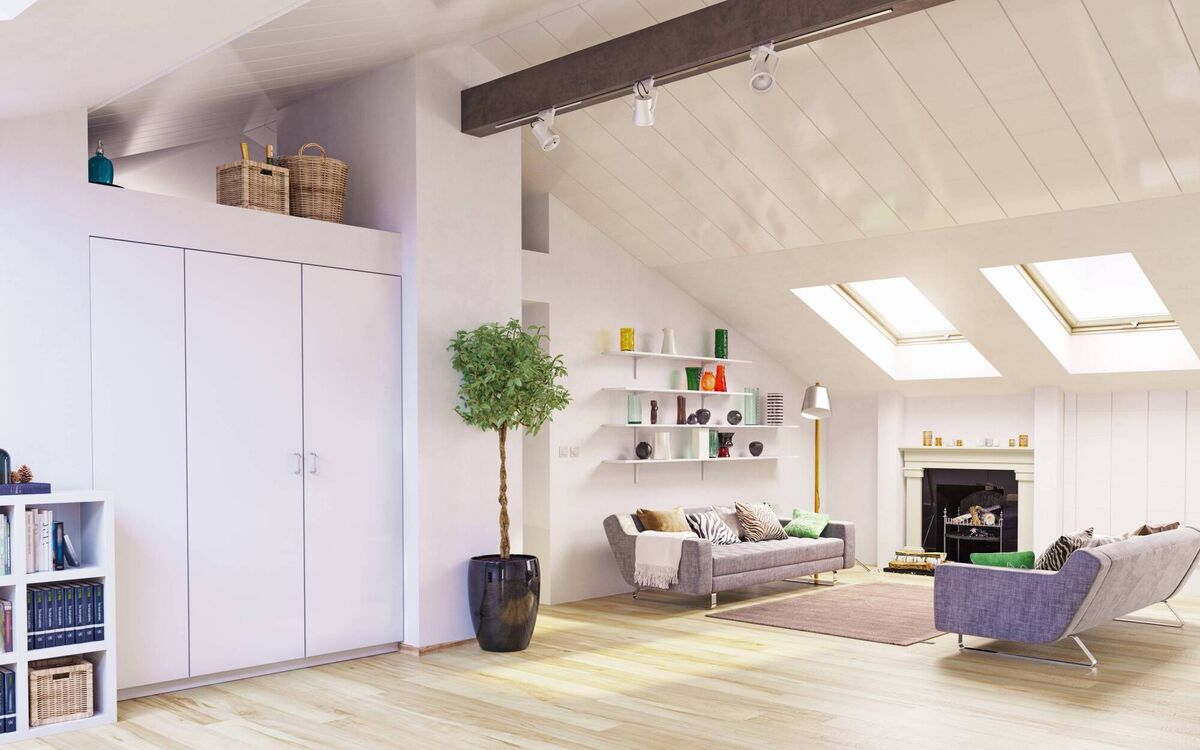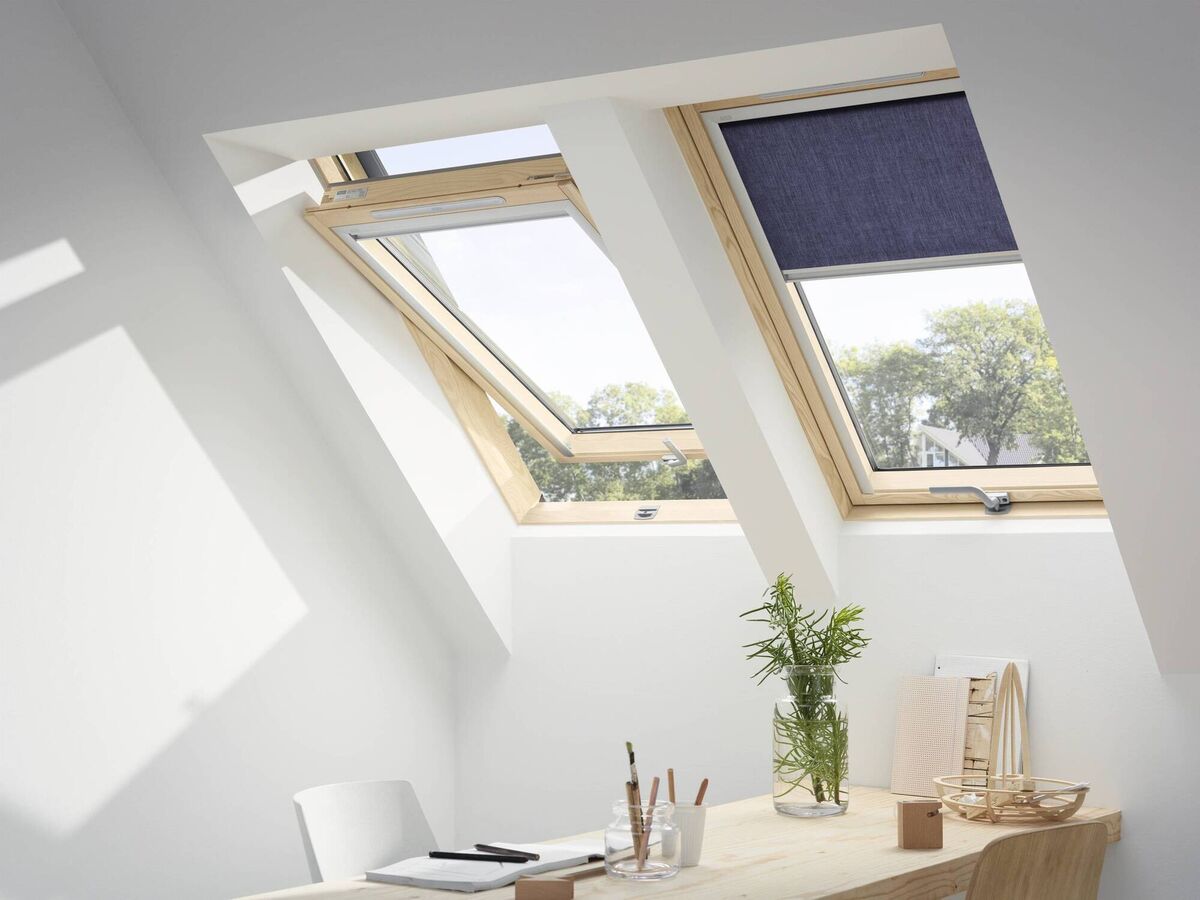Attic conversions' lofty potential: Exploring costs and grants

In addition to wrapping water pipes, and insulating any water tank for a gravity-fed system, ventilation is key to managing condensation in your loft spaces. Picture: Getty
Do you really know anything about that largely empty, cavernous space hanging over your ears?
Here’s just the basics as you get to know your attic and its lofty potential.
We talked recently about the need for at least 300mm of blanket insulation on your attic floor, and you can find details of the generous SEAI-managed grant funding of between €800 and €1500 here.
In addition to wrapping water pipes, and insulating any water tank for a gravity-fed system, ventilation is key to managing condensation in your loft spaces.
With a modern tight build, and extra insulation across the attic floor (especially if it has been installed with a condensation barrier) any moisture getting into your attic can sit in the now relatively cold space and condense onto timber surfaces encouraging rot, and onto your insulation materials, potentially causing them to sag down.

We need air exchanges here just as we do downstairs. If you find damp patches on the ceilings below your attic, you may have just this problem.
If you are improving the insulation levels, it’s a perfect time to check on cross-ventilation measures to take any vapour out of the attic.
These would include soffit vents, running vents, and even ventilation tile products.
Check to see if any vents already in place are not blocked by new insulation. The SEAI advises, “Long-term exposure to interstitial condensation within a roof space can lead to structural roof timbers rotting. It is essential that a cold roof space is adequately ventilated”.
Read the full guide here.
The building regulations rule out most pitch roofed, domestic attics (but it doesn’t put people off going ahead with a conversion to a “storage room” that is actually used as habitation).

It’s a contentious regulation rooted in the vital need for proper escape and ventilation, especially in bedrooms, but many building professionals regard the headroom demand as outdated in an era where we are desperate for more room within the building shell, at a low cost, without the need for planning.
Our understanding of healthy air exchanges and the devices available to keep the air fresh have improved out of all recognition.
Willie Busteed, who runs specialist attic conversion firm Busteed & Sons Attic Conversions Ltd (Cork) with his son Wayne explains the process in fuller detail.
“Planning permission for attic conversions is a grey area. We always advise all our potential clients to contact planning.
"Irish roofs, in general, are a 30-degree pitch which in most cases will not lend themselves to class as habitable. Normally planning is required if you are converting to habitable or if Velux windows are to be positioned at the front or side of the home. It’s also required if a dormer is put in place.
"To qualify as habitable a certain ceiling height 2.4m has to be achieved and this ceiling must be half the room width in length at 1.5 m diagonal measurement. It’s complicated.”

In addition, for habitable status all ceilings on the first floor must meet a certain fire rating, he adds.
"All doors on the first floor need to be half-hour fire doors and frames and staircase clearance must be two metres and lead unobstructed to an exit," says Willie.
"We send all clients' details measurements etc to our structural engineer who has to do calculations on changes to roof structure and he designs the steel beams to be used in each individual conversion and new roof restructure so they can sign off on it being structurally sound.
"We of course insulate to heights standards We also get certification from our electrician to make sure everything is tested to RECI standards.
"We do everything to modern-day standards even if it is classed as non-habitable. After steels are in place and all structural work is done our structural engineer visits and signs off on the restructure even if it is non-habitable giving the homeowner complete peace of mind.
"We photograph all work each day and clients have this and certification if ever they decide to sell their property.”
Moving around the attic, especially one without a proper “cut” roof is hard enough, and generally a forest of brow-bruising trusses. Don’t go up there without a mask as the tiny particulate matter created by dust and insulation materials can be irritating to the lungs.
Where you can floor the space, the attic becomes far more accessible and less stressful to visit. It’s vital to ensure that the going is stable and safe for starters and to avoid depressing any bat or blow insulation that is designed to hold pockets of warming air to remain thermally effective.
Deep insulation may sit higher than your joists. Just because you can see the joists, doesn’t mean they are stable enough for flooring directly down onto.
If in doubt consult a specialist company or a structural engineer for advice. While you’re thrashing around up there, ensure any recessed down-lights in the ceiling below are F-capped approved or set in loft caps to prevent them from overheating under your loft insulation batts.
You don’t have to floor the entire attic and can add pathways to storage areas or say the battery for your photovoltaic array (if it’s aloft) rather than covering every square metre.
You may require new floating joists that ensure you are not stressing the joists resting on the ceiling downstairs or pushing down your 300m blanket of insulation.
Think about adding simple storage shelving into the eaves to lift any boxes of stuff off the floor.
Flooring work should be followed up with a certificate of compliance by an engineer to show potential buyers and surveyors that the work satisfies current building regulations.
Willie Busteed adds: “In the last few years there has been a huge return to homeowners carpeting attic area. Some would use laminate flooring semi solid and solid flooring. Pricing on these all vary on the level of complexity of fitting and are individually priced.”
The fire regulations regarding attic conversions are meticulous and will demand a ream of improvements to an unfinished attic and its access. You would be wise to follow them even where planning is not being applied for.
Chief amongst this is a regulation level stairs — that’s not a pull-down attic stair. The problem is often sacrificing room at the base of the stairs to accommodate its footprint and rise — have your engineer or architect look at your plans.

Mess this up with a DIY disaster, and you’re looking at a major structural alteration to pass planning now or in the future when your adventures are discovered by a surveyor.
Together with ensuring new means of escape, you will be installing fire doors, fire-resistant materials and a fire detection and alarms system to this second or third storey space — it all makes sense.
Otherwise, with an unconverted storage situation, access will be via a ladder or a pull down stair.
If the attic is not a finished space with heating and ventilation to a habitable level, it’s likely to be subject to pretty wild fluctuations in heat and humidity you won’t be experiencing downstairs.
Not every open box of stuff should be bunged up there for long periods.
Most attics have at least a seasonal mouse or two, so unguarded fabrics, paper, stuffed toys, rugs, leather and upholstered furniture is vulnerable to the tooth-ed ones, together with the attention of moths, silverfish, beetles, wasps, as well as playing host to the droppings of bats and nesting birds.
Mould and disintegration can quickly set in due to the fetid atmosphere.
Use sealed rigid plastic boxes with snap lids if you’re forced to put smaller, sensitive materials overhead, and check their condition periodically (vintage clothes will rot even in this setting given time). Ikea’s Samla boxes are ideal at €5.50 each.
This is the moment to ask yourself why, if these pieces are deemed so very precious, fragile treasure-like family photographs are up there at all. Reassign or clear out?












